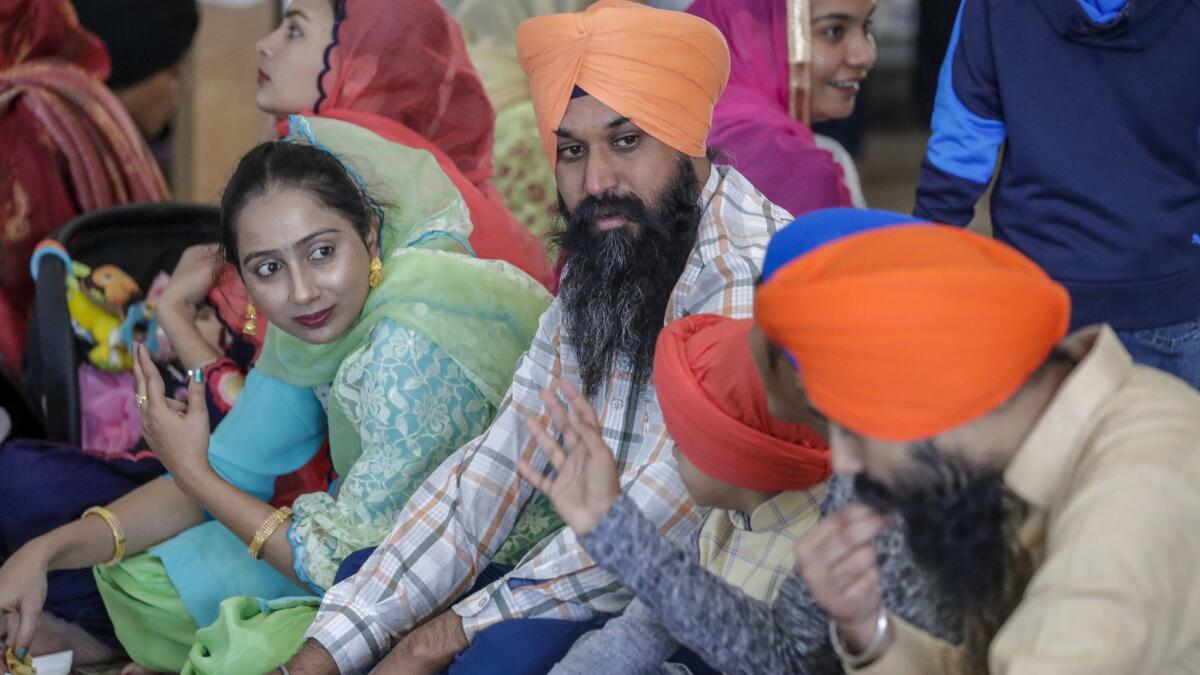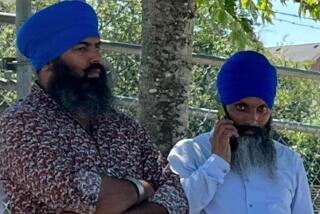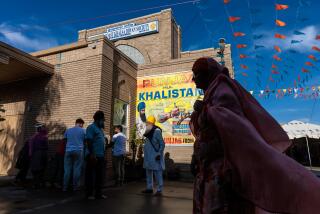Behind the Story: On a search for Sikh truckers

L.A. Times Today airs Monday through Friday at 7 p.m. and 10 p.m. on Spectrum News 1.
Late last year, I showed up at a gurdwara on a mission.
A gurdwara is a Sikh temple. This one was west of Riverside in Jurupa Valley and south of state Route 60, down the road from a high school and a water park. Off Sikh Temple Way, the three-story concrete building with three white minarets is open daily for prayers yet rarely full.
But this day was special.
Thousands of Sikhs arrived up in bright kurta pajamas (loose cotton shirts and pants) for Nagar Kirtan, an hours-long festival and procession where Sikhs sing hymns and carry their holy book, the Guru Granth Sahib, on a float. There was a fair with seemingly endless trays of freshly fried samosas passed through the crowd in an overflowing parking lot, and an array of desserts such as jalebi (fried batter soaked in sugar syrup) and freshly squeezed sugarcane juice that got attendees, including me, extra energized.
Times photographer Irfan Khan and I wore hastily self-tied, thin orange turbans in order to enter the temple grounds. A group of men pointed at our heads and commanded us to “come over here!” I thought they were going to tell us we had done it all wrong. But they actually had a turban station set up for non-Sikhs. They sat us down to tie new, more intricately folded ones.
Around us, the stereos blasted the loud drums of bhangra music.
It was a party, and everywhere there were 18-wheel semi trucks.

Khan and I had been reporting on the growing number Sikh truck drivers in California and Indian American-owned truck stops of the West. We were told that members of this temple had close connections to the profession.
We made the trip that day in hopes of meeting a few truckers, looking for one who would let us join a cross-country road trip to profile the community. What we didn’t realize is that nearly every person we came across would be connected to the industry.
There was Baljit Singh, a man with thin-rimmed sunglasses, a wispy white beard and yellow turban who has been behind the wheel of trucks for more than 30 years. When we asked him whether he knew any other truckers around that day, he chuckled.
“They all are,” he said.
Then there was Ekamjit Sandhu, an elementary school-age boy we met. Most kids get excited to ride in their parents’ cars. Ekamjit bounced in his uncle’s neon green rig, ready to ride in the parade around the surrounding blocks.
How a rural Oklahoma truck stop became a destination for Sikh Punjabis crossing America »
There were truck wash operators and truck company owners. There were couples who recently moved to California from the East Coast to seek a career in trucking, and longtime drivers who had never worked outside the business.
And there was Palwinder Singh, the trucker of 15 years who invited us to the gathering to get a peek into his world. Pal — as he calls himself for short (said like “Paul”) — moved to the U.S. in 2001 from India’s Punjab region, where he came from a family of farmers.
“I knew many Indians worked in 7-Elevens, liquor stores and gas stations before I came to America, but I had no idea about trucking,” said Pal. “I found out all about it while I was here.”
Pal, who lives in Fontana and travels to Indiana three times a month to make shipments, offered to take us and Times video journalist Claire Collins in his rig for the trip east. He became our tour guide to the world of Sikh trucking, one that’s centered in the Western U.S. on Interstate 40.
Now, we show that world to you.
More to Read
Sign up for Essential California
The most important California stories and recommendations in your inbox every morning.
You may occasionally receive promotional content from the Los Angeles Times.











